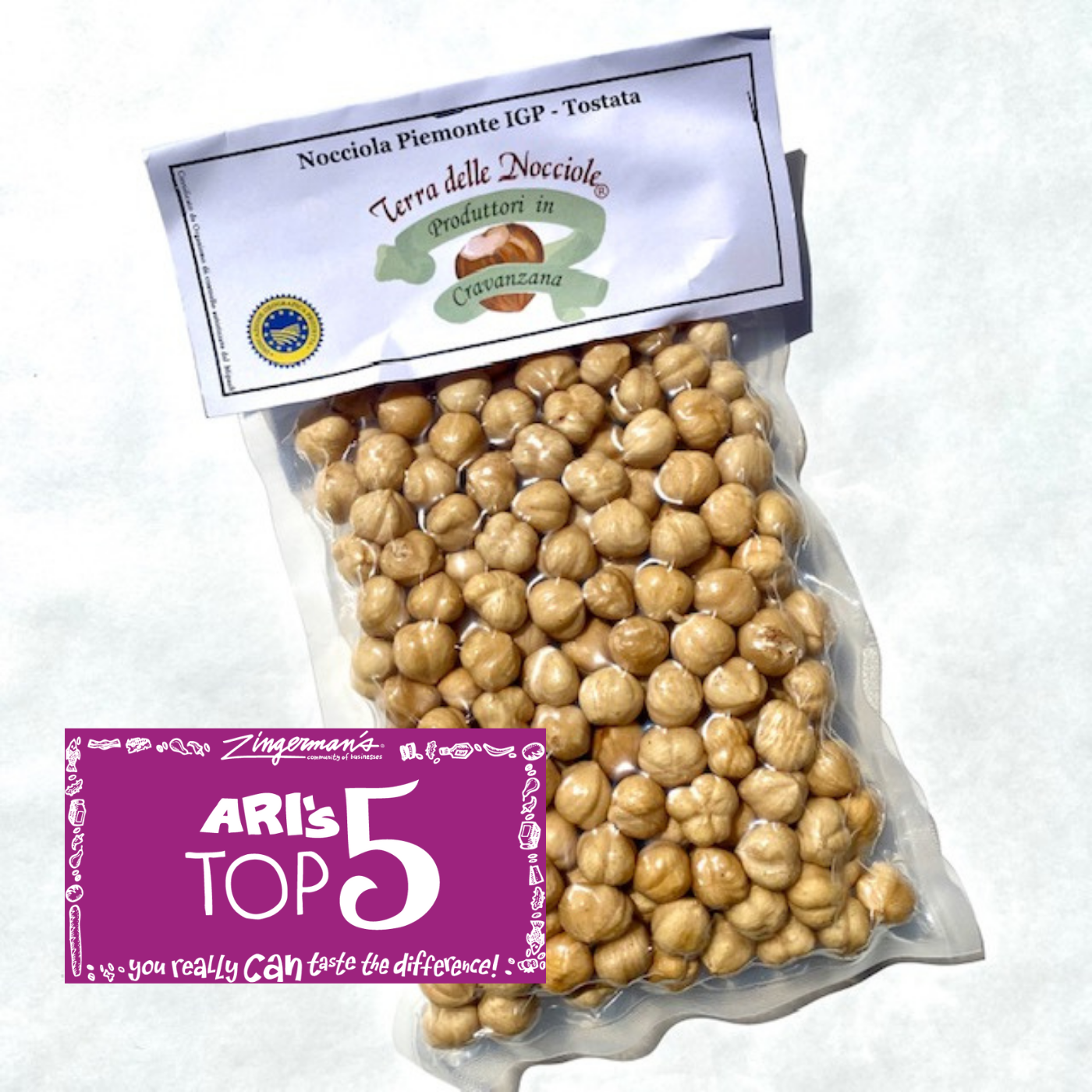You probably already know of our company crush for Ann Arbor’s food wonderland Zingerman’s. We share the same idea of good food, business values, and even some ingredients! Here is our esteemed friend Ari from Zingerman’s reportage of his last trip to Piemonte, when he went to visit our hazelnut heroes at Terra delle Nocciole and fell in love with their Alta Langa Hazelnuts.
Classic Tonda Gentile Hazelnuts from the Piemonte
The Nureyev of nuts brings elegance and excellence to your table
One of the culinary highlights of last year’s visit was the region’s exceptional hazelnuts (“nocciole” in Italian). Everyone who eats good food around here will certainly have heard of—and had—hazelnuts. But many of us in the U.S. can easily go a lifetime without ever experiencing just how exceptional a truly great hazelnut can be. Turkey grows the most by far, and there are a lot grown in the U.S. But the Piemontese nuts (the formal name of the regional variety is “Tonda Gentile”) are the most precious. The essence of excellence, they have the most intense flavor, the most aromatic of perfumes. I’ve started thinking of them as “the Rudolph Nureyev of the hazelnut world”—they bring exceptional grace, strength, and a singular presence to the plate. And when you experience them, even those who know little about food will still know they’re in the presence of greatness. They’re that good.
The hazelnuts we have here now are from the small firm of Terra Delle Nocciole—“Land of the Hazelnuts.” The company is located in the tiny (population, 400) hilltown Cravanzana, in the southern part of the Piemonte (closer to Genoa than to Turin) at an altitude of about nearly 2,000 feet above sea level. Most of their hazelnut production goes to supply gelaterie (nocciole is one of Italy’s most popular flavors), so I feel fortunate to get some in retail packs. The company is run by a trio of childhood friends: Giorgio, Marco, and Marco who continue to love working together. All three grew up in the “field”—their grandparents were all farming hazelnuts back in the early 20th century when the work had to be done with oxen—no trucks or tractors. The trio has stayed true to their families’, and the region’s, traditions: “We like doing things well. Our belief is quality.”
For background, hazelnut trees are not a quick way to boost an economic “harvest.” It takes nearly 10 years before a nut appears for consumption. (Notice there were no incentives in the recent Federal loan program to plant them.) To invest time, money, and energy in them one has to believe in the long term possibilities. But as one hazelnut farmer said, “Time is different when you work in agriculture. For us, nine years is nothing.” The trees are on the smaller side, generally 10-15 feet tall. The flowers, which come out each spring, are long and light green and hang down from the tree in a way that locals say look like “sheep tails” (personally, they remind me of a tree decorated for Christmas). When they’re ripe, the leaf around the nut opens and the nut, still in its shell, falls to the ground, and the farmers begin the work to gather them up. Historically, the hazelnut tree has been seen as a symbol of peace, health, wealth, and happiness, and was believed in ancient times to bring magical powers (hazelnut wood was used to make divining rods). Nutritionally, hazelnuts have about 40% monounsaturated oleic acid and are loaded with Vitamin E as well.
What makes Piemontese hazelnuts so amazing? Same things that make most every high-quality agricultural product so amazing—great variety, great terroir, terrific farming practices. The folks at Terra Della Nocciola let the nuts dry in the sun to cure them the old-fashioned way and get better quality as a result. What would one do with a world-class hazelnut? Really, the same thing you’d do with any other nut. If you visit the Piemonte, you’ll find them served pretty much the way Americans eat peanuts—by the handful for a snack—with a glass of wine. Chop and put ’em onto fruit salad, gelato, granola, cake, or cookies. Salads, pastas, steamed vegetables. Add them to breads, brownies, or your next batch of chocolate chip cookies. Elizabeth Minchilli has a great recipe for a chocolate hazelnut cookie called Crucchi (that’s pronounced “Kroo-kie” in Lazio dialect, brutti ma buoni elsewhere in Italian).
